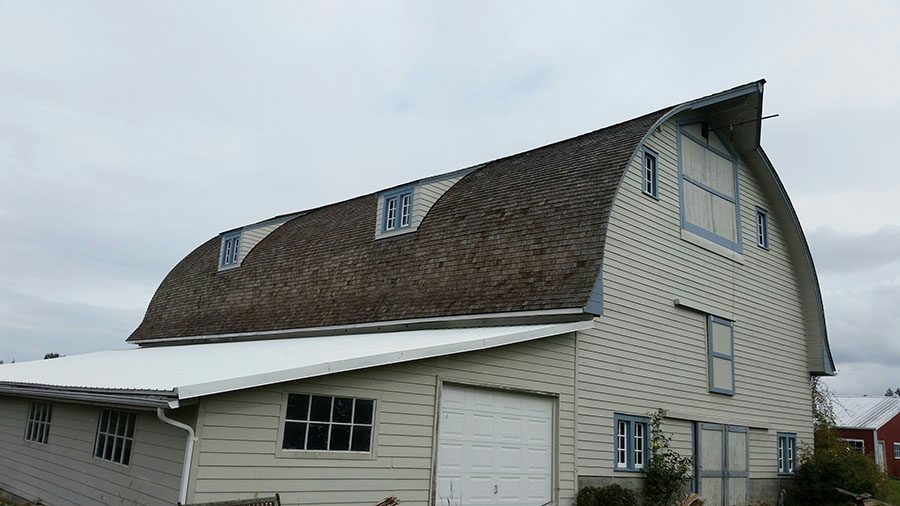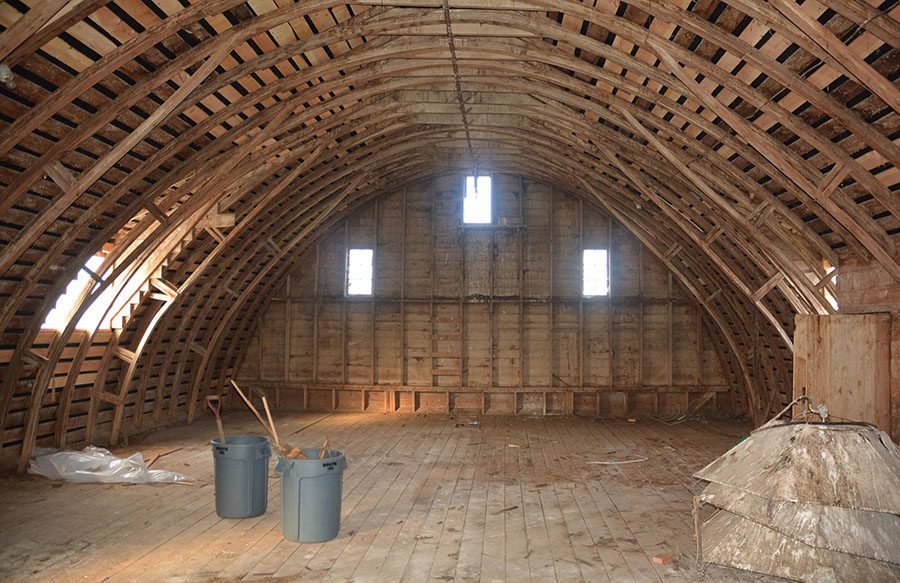Heritage Barns: The Shaeffer Barn in Whatcom County

Whatcom County may well be Washington’s most scenic county. Running up from the Skagit County line into the historic town of Fairhaven (incorporated as part of Bellingham in the early twentieth century), Chuckanut Drive turns motorists in to Sunday drivers every day of the week. The parkway meanders along the forested hillside, offering peek-a-boo glimpses of the Salish Sea and the many islands that abound, with Lummi Island in the foreground. The eastern portion of the county, while far less accessible, is no less stunning. North Cascades National Park encompasses the bulk of this region and boasts over 300 glaciers – the most glaciers anywhere in the lower 48. In addition to its physical beauty, North Cascades features industrial prowess as well. Three dams in the upper reaches of the Skagit River, constructed over a 40-year period beginning in 1919, form the Skagit Hydroelectric Project. The brainchild of J.D. Ross, an early superintendent of Seattle City Light, the dams continue to provide Seattle with a significant portion of its power needs. Separating east from west, sitting nearly in the geographical center of Whatcom County, is majestic Mt. Baker, also known as Koma Kulshan. At 10,781 feet, it is one of the northernmost volcanoes within the Cascade Range situated within the United States.
But for those traveling anywhere in the county between Bellingham Bay and the foothills of Mount Baker, they are witness to dozens of landscape features that add to Whatcom County’s beauty – barns! Agriculture has always been a prominent practice in the county, particularly dairy farms. In 1892, the first creamery opened, established by a group of dairymen near Custer (situated along the present-day I-5 corridor). Several more creameries soon followed and in 1919 the Whatcom Dairymen officially formed. Egg production was also on the rise during this time, and by 1920, egg and poultry farmers collaborated to create the Washington Egg and Poultry Cooperative Association (in 1929 the Association built the Bellingham Granary for broader distribution of eggs – the Granary still stands along the waterfront and is undergoing rehabilitation for use as a commercial building).
The Shaeffer Barn, just outside the Bellingham city limits, is part of this story. According to locals, a Mr. Wessel constructed the gothic style barn in 1941 to support a dairy business operated by Martin Shaeffer and his family. One account suggests Mr. Shaeffer had the barn built to prevent his son from being drafted to fight overseas in WWII, hoping employment on a dairy farm would be viewed as contributing to home front wartime activities. The ground floor featured sills for stanchions and gutters for milking. The upper floor was built as a hay mow, with an overhead trolley for putting up loose hay (the trolley system and hay fork still exists).

After the war, the 50-acre property changed hands a number of times, until the Oliver Zander family purchased the farm. They added a third floor to the barn along with a lean-to on the west side, equipping all three floors and the lean-to for raising chickens. In 1959, the James Stephens family purchased 5 acres adjacent to the barn, which included a house. Over the next several years, Stephens acquired the barn property as well as an additional neighboring parcel. The barn sat mostly unused except for storage of hay. The lean-to was used for cattle.
In 2000, the Stephens family debated between tearing down the then dilapidated barn or restoring it. According to Mr. Stephens, tear down costs exceeded expenses for a new asphalt roof, siding repair and paint. Being economical, he chose restoration. In 2011, Peter and Kellie Schmidt purchased the barn and house on 5.7 acres. They currently use the barn for tractor and farm equipment storage on the ground floor, storing approximately 2500 bales of hay on the second floor. The third floor – an element rarely found in dairy barns, is left undisturbed due to barn owl nesting. Thankfully, the Schmidts have also carried on the history of barn rehabilitation practiced by previous owners. In 2016, with grant support from the state’s Heritage Barn Rehabilitation Program, Peter and Kellie were able to structurally stabilize the south wall, restore exterior siding and windows, and again replace the roof – this time using wood shingles. The barn can be easily viewed from both East Smith Road – a road well-traveled by people heading to Mt. Baker from Bellingham and back again!
Grant funds through the state’s Heritage Barn Preservation Initiative were provided to support rehabilitation of the Shaeffer Barn during the 2015-17 biennium. Fortunately, grant funds are once again available to owners of Heritage Barns. The Heritage Barn Initiative is a program of the Department of Archaeology & Historic Preservation. Funding from the program has worked to preserve over 100 barns across the state. For more information, visit the DAHP website.

